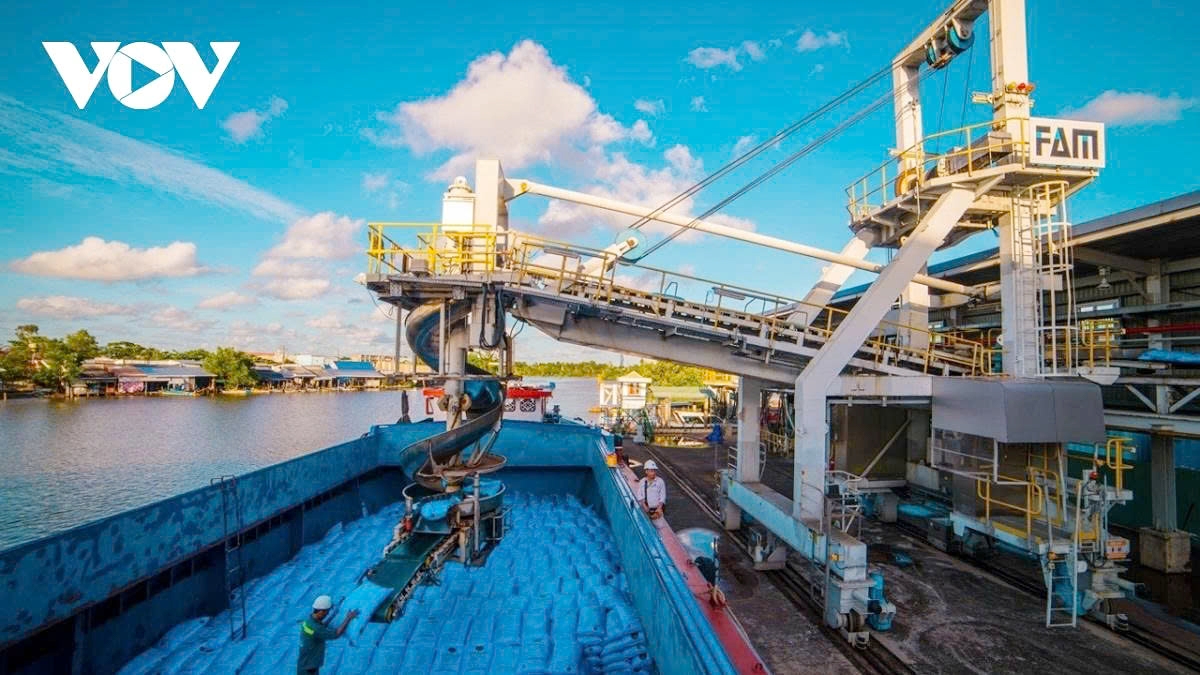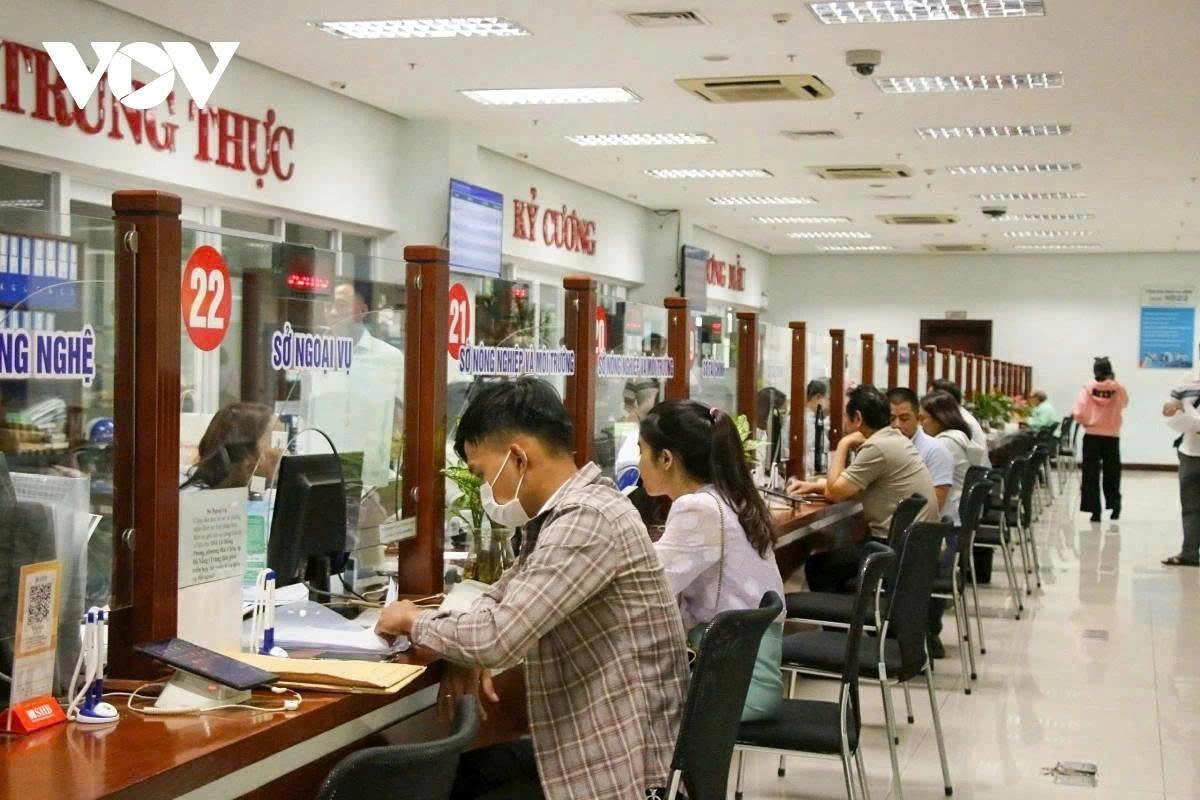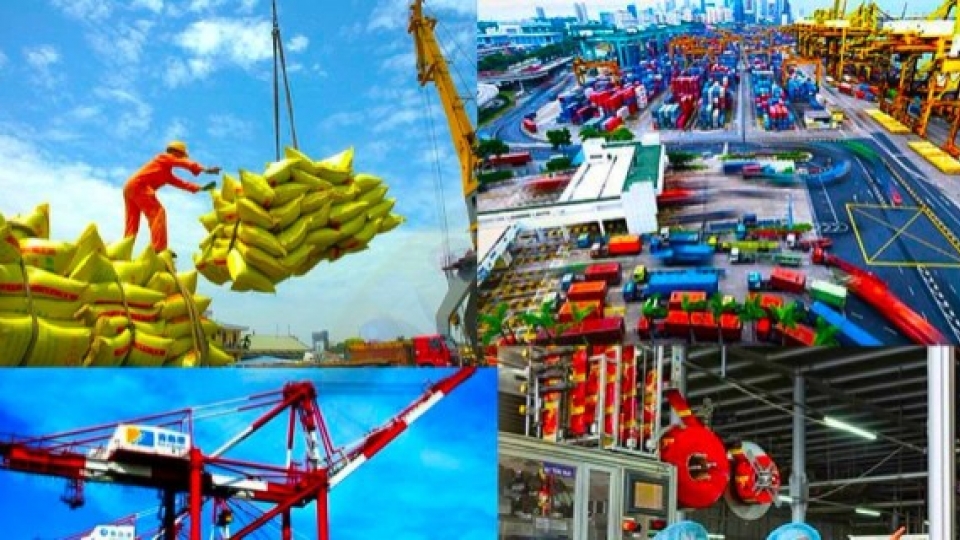Major drivers behind Vietnam’s 7.52% record growth in H1 2025
VOV.VN - Amid ongoing global uncertainties and economic slowdown, Vietnam recorded GDP growth of 7.52% in the first half of 2025, the highest six-month rate in the 2011-2025 period.
This strong performance is driven by key sectors, including tourism, trade, foreign investment, and construction. More broadly, it is largely credited to bold institutional reforms and a more dynamic administrative system, according to economists.
Tourism saw a surge with nearly 10.7 million international arrivals, up over 20% year-on-year, boosting related consumption and services. Foreign trade, transport, and tourism contributed 8.14% to GDP growth, the highest in 15 years. Construction also posted record growth of 9.6%, contributing over 42% of overall growth.
Notably, newly established businesses reached a historic high of 24,000, double the average from 2021 - 2024. Foreign direct investment (FDI) hit over US$21.5 billion, up more than 32%, reflecting improved investment conditions and restored market confidence.
Reform momentum as a key driver

According to economist Vo Tri Thanh, director of the Institute for Brand and Competitiveness Strategy, this robust growth reflects the impact of pro-business reforms, open policies, and accelerated public and private investment.
Specifically, he attributed part of the success to an unprecedented wave of institutional and administrative reforms, describing this as a ‘revolution in governance.’ The reform push includes streamlining state agencies, simplifying procedures, and empowering local authorities, creating a more agile and responsive public sector that has improved business confidence.
Meanwhile, Dr. Tran Anh Hung, head of the Business Administration at Ho Chi Minh City University of National Economics and Finance, said Vietnam’s strong GDP growth in the first half of 2025 was fuelled by FDI, exports and tourism and services. Of these, FDI and exports served as the primary drivers by generating production spillovers and attracting labour, while tourism played a supporting role.
In his analysis, there are four main factors behind the surge in these growth pillars. The monetary policy from the State Bank of Vietnam at the start of the year has proved effective in stabilising exchange rates and controlling inflation, which helped reinforce consumer confidence and preserve purchasing power.
A shift in the production structure toward a higher share of high value-added manufacturing and improved localisation rates boosted overall GDP. Public investment disbursement reached around 43% of the annual target, giving a strong push to GDP growth through the implementation of major infrastructure projects. In addition, the country’s new-generation free trade agreements (FTAs) continued to yield results as many businesses leveraged tariff incentives to increase exports and attract new investment.
In his view, the recent institutional reform momentum, focused on streamlining the state apparatus and implementing strong pro-private sector policies by the Party and Government, marks a turning point in breaking down long-standing structural barriers such as bureaucracy and administrative burdens caused by an overcomplicated system.
Empowering the private sector, removing obstacles to land access, credit, and market entry is expected to become a sustainable growth driver. If implemented consistently and transparently, these reforms could reshape the economic structure, reduce dependency on FDI, boost productivity, and enhance Vietnam’s national competitiveness in the coming years.
However, experts said, in the short term, particularly within the remaining six months of 2025, these reforms are unlikely to produce immediate impacts on GDP growth. The reason is that institutional reforms and business environment improvements require a time lag to materialise into actionable results.
Even when businesses recognise positive signals, they still need time to plan for expansion, obtain permits, arrange financing, and launch new projects. Furthermore, external challenges such as slowing exports, rising trade compliance costs, and escalating US–China geopolitical tensions will likely weigh heavily on the national economy in the second half of the year. Therefore, institutional reforms can only help manage medium- to long-term expectations, rather than deliver an immediate growth boost.
Challenges ahead

According to the National Statistics Office’s forecast, Vietnam must achieve a growth rate of 8.42% in the second half of 2025 to meet the annual GDP target of 8%. So, how can this ambitious goal be reached?
Economist Dr. Vo Tri Thanh noted that the growth momentum heading into quarters III is strong, which is a positive signal for the second half. However, he acknowledged, reaching the 8% full-year target would be no easy feat.
“Vietnam has a highly open economy, so any fluctuation in global markets directly affects us,” he told thanhnien.vn. “The world remains unpredictable, with ongoing geopolitical conflicts and tariff policies that could impact both trade and investment.”
Domestically, the most critical factor is public investment disbursement, which is below average in many localities, a potential drag on the overall economic outlook. To continue maintaining strong export growth and attracting FDI, accelerating infrastructure development, and reforming administrative procedures to attract investment, local administrative units after mergers need to quickly stabilise and start operating effectively.
“They must hit the ground running, or investors and citizens may feel it’s just ‘old wine in new bottles.’ Only then can we maintain growth momentum,” said Dr. Thanh.
Meanwhile, Dr. Tran Anh Tung agreed that achieving 8.42% growth in the second half is a very ambitious target, requiring an extraordinary effort. Among obstacles, he said, is sluggish domestic consumption, as worker incomes have not kept pace with rising living costs, thereby weakening demand.
Exports, while maintaining double-digit growth in the first half, may slow down due to declining consumer demand in the US and EU, particularly in major export sectors like electronics, textiles, and wood products. Rising US - China trade tensions could lead to tighter origin controls and anti-fraud measures, disrupting export flows and increasing compliance costs.
The record high FDI disbursement in the first half is unlikely to be repeated in the second half, as many projects front-loaded investment in quarters I and II to benefit from stable material prices and tax incentives. In addition, the low base effect that helped boost growth in early 2025 won’t apply in quarters III and IV, as the same period in 2024 already saw economic recovery, thus raising the comparative baseline.
“These conditions mean we must exceed expectations to stay on track,” emphasised Dr. Tung.
Positive outlook

From a different perspective, Dr. Huynh Thanh Dien, a lecturer at Ho Chi Minh City-based Nguyen Tat Thanh University held an optimistic view on Vietnam’s ability to sustain its major economic drivers in the upcoming period. He analysed that despite many global economic fluctuations recently, Vietnam has still demonstrated a good investment environment. Despite being taxed, thanks to skillful government actions, the country has maintained investor confidence. This explains why newly registered FDI in the early months of the year has increased significantly.
This advantage will surely continue to be leveraged in the second half of the year. The more volatile the global economy becomes, the more a country with flexible and adaptive foreign policies gains opportunities to become a preferred destination for investors. Furthermore, the government has issued a series of breakthrough policies improving the investment environment, especially in administrative reforms and investment procedures.
These will be important factors driving the construction sector to become a new pillar of the economy in the near future. Both public and private investments will develop strongly, with construction triggering growth in many related industries, contributing more significantly in the years ahead.
Another factor is the service and tourism sectors, which have been growing well. The second half of the year includes many favourable periods to stimulate demand for tourism, shopping, and consumption of goods, thus boosting spending on services. All these factors combined will support GDP growth according to the planned scenario, achieving the full-year growth target of 8%.




